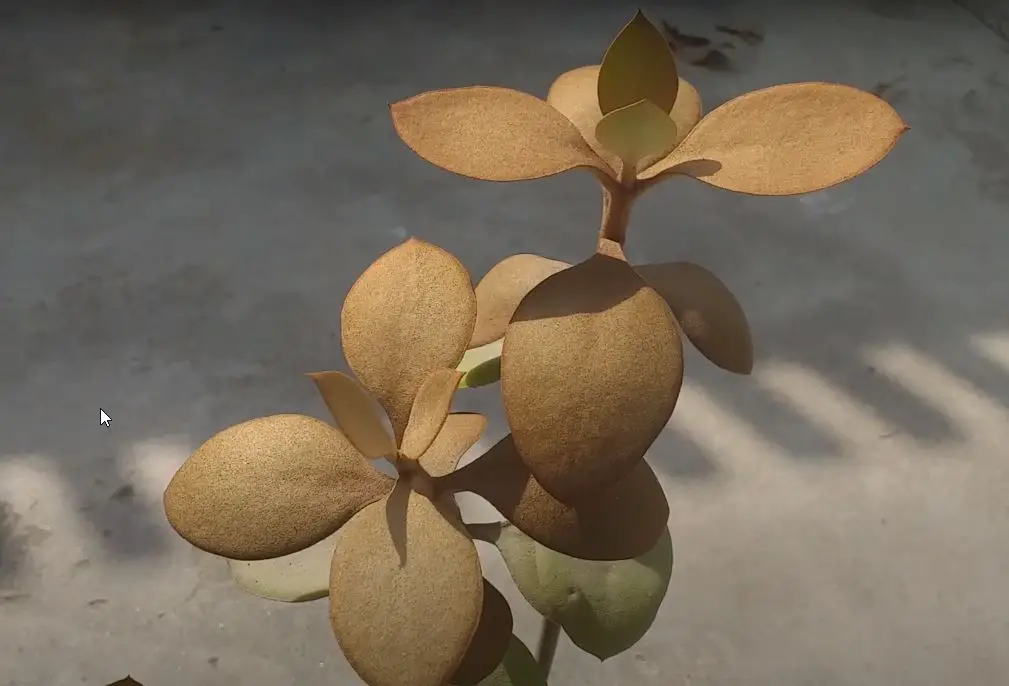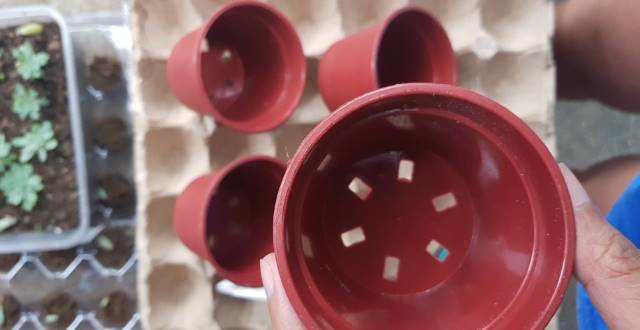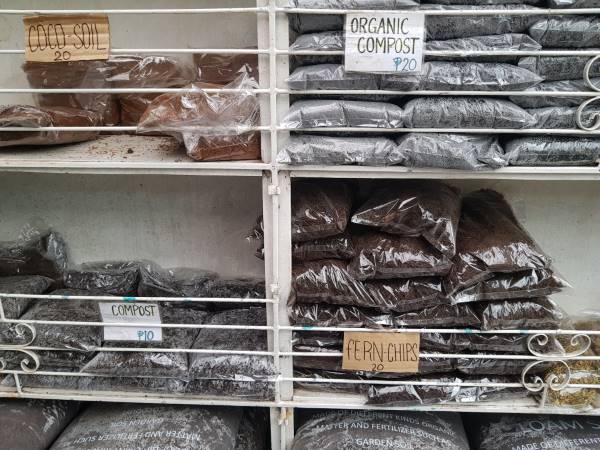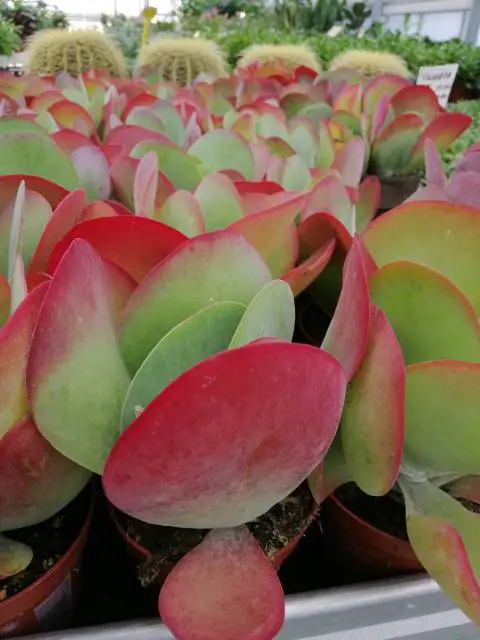Kalanchoe orygalis Baker. is an evergreen, flowering Kalanchoe succulent belonging to the Crassulaceae (Stonecrop) family. The name of the species is derived from a Greek word ‘Oryga’ which means a measure of 6 ft (72 inches), also known as a fathom, which indicates the distance between the extended arm and tips of the fingers. The name of this species has been given due to the measurements or size of this succulent that typically reaches 6 ft in height.
Kalanchoe orygalis closely resembles Kalanchoe bracteata. It is a spectacular double toned succulent that makes it unique from all other Kalanchoe succulents. This amazing Kalanchoe succulent has a whole lot of color and beauty to offer any garden. You can often see Kalanchoe orygalis as a lovely low hedge or an enchanting, attention-grabbing succulent in a mixed planting system. The big plus of this succulent is that it does not require a lot of maintenance. If you are looking for a succulent with a strong earthy feel it is a must-have for you.
Kalanchoe orygalis will give the most wanted amazing color and contrast to your indoor and outdoor gardens. It is also popular in landscape designing due to the captivating colors and features of this succulent, particularly in areas with warmer climates.
Common Name
It is commonly known as ‘Copper Spoons’, ‘Leather Plant’, ‘Cinnamon Bears’, and ‘Shoe Leather Kalanchoe’.
Synonyms
Kalanchoe antanosiana Drake
Kalanchoe cantonasyana Drake
Origin and Habitat
Kalanchoe orygalis is an accepted species of Kalanchoe succulents. It was first discovered and described in 1882. Its native range is in southern and southwestern Madagascar (an island country lying off the southeastern coast of Africa). It grows wild in the Rocky Mountains and dry soils of Madagascar.
Features of Kalanchoe orygalis
Kalanchoe orygalis is a beautiful freely branching shrub succulent. It has a long, erect, and branched stem that grows to 6 ft (1.8 m) in height with velvety spoon-shaped leaves. But this slow-growing succulent will not grow too tall indoors and it is mostly observed as a small plant. Since it does not grow too large it is very easy to move inside and outside. The young shoots of the succulent are long-haired.

The leaves are oblong, stalked, spatulate-ovate, elliptical, or lanceolate shaped standing in an upright position. They are held opposite to each other on the stems. Leaves are double toned with an amazing cinnamon brown or copper tone on the upper side and silvery grey tone on the lower side. The upper side of the leaves also bears fine, tiny cinnamon-colored hair. The copper tinge of the leaves is something that will give an eccentric touch to the gardens.

The leaves turn completely silver as the plant ages. Lower leaves are the first to fade away and turn silver. The lower silver leaves and the upper copper leaves will create a contrasting niche together. It produces sunny yellow bell-shaped blooms in terminal clusters at the tips of the branches.
Blooming season
Kalanchoe orygalis blooms merrily by giving off yellow flowers on panicles from late winter to spring season. The bloom gives a bright yellow floral display during the blooming season.
How to grow and care for Kalanchoe orygalis?
Kalanchoe orygalis is super easy to cultivate and maintain and makes a great plant in any garden due to its low care requirements.
Keep reading till the end to know how to care for this amazing succulent.
Light requirements
These succulents need plenty of sunlight. Outdoor copper spoons can be planted in full sun to partial shade. In areas where the summer is extremely hot, and the sunlight is too intense they should be planted in light shade. Indoor succulents should be kept near a bright sunny window for ample sunlight exposure. Avoid contact with the windows during the summer season, when the sun is too intense it may cause the burning of leaves.

Note: If your succulents start growing too tall or appear leggy or stretched out, it is an indication that it is not getting enough sunlight.
Potting mix
Copper spoons requires a well-drained soil mix. It can also thrive well in nutrient-poor potting soil. Use succulent soil with 50 to 70% grit such as coarse sand, perlite, and pumice.
Coarse sand, perlite, and pumice improve the drainage and aeration of the potting medium. A well-draining potting soil will not retain the moisture and prevent the roots from rot. Avoid the use of a potting medium that is too clayey.
Temperature requirements
Kalanchoe orygalis grows well in warm regions with a winter temperature of 5° C (41 ° F). It can tolerate the high heat well. It can be easily grown as an outdoor succulent in areas where the temperature is warm.
Copper spoons is a soft succulent and will not survive freezing temperatures. Below freezing temperature will cause frost injury and death in no time. If there is a risk of frost it is better to bring the potted plants indoors and place in a sunny windowsill or an artificial grow light. If the succulents are grown in garden soil it is better to cover them with frost clothes to protect from freezing weather. It has been reported that even a few hours of exposure to below freezing temperatures can kill the succulents.
It can be grown outdoors in containers during the summer season and as a lovely indoor succulent during the winter season.
Cold Hardiness Zones
Copper spoons can be grown as hardy succulent in USDA zones 9 to 11.
USDA Zone 9b: (25-30 °F) -3.9 to -1.1 °C
USDA Zone 10a: (30-35 °F) -1.1 to 1.7 °C
USDA Zone 10b: (35-40 °F) 1.7 to 4.4 °C
USDA Zone 11a: (40-45 °F) 4.4 to 7.2 °C
USDA Zone 11b: (45-50 °F) 7.2 to 10 °C
Copper Spoons Water requirements
The watering needs vary with the seasonal temperatures. Copper spoons needs moderate irrigation in the autumn and spring season, while during summer they need to be irrigated more frequently. During winter they need occasional watering, irrigate only if the plant starts shriveling.
Water well and let it drain out of the drainage hole. Then wait for the soil to dry out completely before applying the next irrigation. Insert your finger in the soil if the top 1 to 2 inches are completely dried, it is the right time to water.
Though these succulents can survive a period of drought but do not neglect them for a long time. It has been observed that Kalanchoe orygalis can thrive well for 3 weeks without water.
Overwatering is the most commonly occurring problem causing the death of the succulents. Excess of water causes rotting and decay of roots; it also encourages fungal growth. So, be very careful with the use of water.
Humidity
All varieties of Kalanchoe succulents can generally take all levels of humidity. Copper spoons will thrive well in indoor humidity.
Fertilization
Though Kalanchoe orygalis gets plenty of nutrition from the potting medium, it can be benefited from a moderate dose of fertilizers.
Fertilization is always a fun thing for enthusiast gardeners who want to make their plants grow luxuriantly. It is recommended to fertilize your succulents during the active growing phase biweekly or monthly with a light dose of cactus fertilizer or succulent fertilizer mix. These plants don’t need a lot of nutrients so, avoid the overdose of fertilizers.
An extra supply of nutrients will help your succulents to grow healthy and lush with better blooming.
How to propagate Kalanchoe orygalis?
The succulent produces small offsets at the base. These small offsets can be removed and propagated into entirely new plants. Kalanchoe orygalis can also be propagated by leaf and stem cuttings.
To take the cuttings use a clean sharp scissor or gardening shears. Gently cut the plant part you want to propagate. To propagate from offsets gently remove them from the base of the plant. Let the cutting sit at a warm dry place for 2 to 3 days. It will allow the cuttings to develop callous at the cut edges of the cuttings.

Fill the containers (in which you wish to propagate the succulents) with a standard succulent mix. Place the cuttings at the top of the pre-moistened potting soil (a mix of peat, sand, perlite, pumice). Keep misting the cuttings regularly 5 to 6 times a day. The cuttings need more water until they establish in the soil.
Keep the pots near a window with indirect sunlight. The succulents will start rooting after 2 to 3 weeks and will be ready to transplant into new containers.
How often to repot Kalanchoe orygalis?
Kalanchoe orygalis does not need frequent repotting. It can thrive well in the same container for years. However, a general rule is to repot all Kalanchoe succulents every 2 years, it will provide a fertile potting medium to the succulents with plenty of nutrients. Even if your Kalanchoe has completed 2 years in the same container and is growing healthy still you should repot into new containers.
It is also recommended to repot in certain other conditions, for example, when the potting medium and the container have poor drainage, the succulent is attacked by insect pests or diseases, and when the container is too small for the succulent to grow and spread. It is also advised to repot every time you buy a new succulent from the market.
Does Kalanchoe orygalis need maintenance?
Generally, Kalanchoe orygalis does not require maintenance. However, pruning to remove the spent blooms and dead leaves can encourage more growth in the next growing season. Just take a clean scissor and snip off the spent blooms and dead leaves gently. Make sure you don’t injure any other part of the succulent. Pruning will also make your succulent look neat and tidy.
What type of containers should be used for growing Kalanchoe orygalis?
Pick the pots or containers with drainage holes to allow the excess water to drain out. It is recommended to use terracotta pots or glazed ceramics because they have good drainage capacity.
What are the problems of Kalanchoe orygalis?
Mealybugs and aphids can be occasionally observed attacking the indoor plants. However, these insects are not a very big problem. You can control the infestation easily if you spot the problem at an early stage.
It is recommended to use 70 % isopropyl alcohol or neem oil spray to get rid of these tiny bugs. The stems and leaves of the succulent should be rubbed with isopropyl alcohol. If the infestation is very severe, you can use a non-toxic insecticide spray.
Another big problem with all Kalanchoe succulents is overwatering. You may experience this problem if you have accidentally overwatered your succulent. Therefore, optimize the use of water to save your succulents from the havoc of overwatering.
Is Kalanchoe orygalis an outdoor or indoor succulent?
Kalanchoe orygalis can be grown inside and outside. In areas where the temperature is warm and doesn’t go below freezing, it is best to grow these succulents outside. They should be grown as indoor succulents in those areas where the temperature often goes below freezing.
What are the uses of Copper spoons?
It is a handsome drought-tolerant shrub that thrives well in warm climates. Its captivating colors make it a must-have to include in succulent gardens.It will also make a great succulent specimen in landscape designing.
From where to purchase Copper Spoons?
Look for this amazing succulent in nearby local nurseries or plant markets. Kalanchoe orygalis is also available on Mountain Crest Gardens (https://mountaincrestgardens.com/kalanchoe-orgyalis-copper-spoons/) for the US residents. I have seen several Facebook pages or groups of plant nurseries that have made it easier to buy the Kalanchoe succulents online. Just look for the local shippers in your area and ask them for your favorite Kalanchoe succulent.
Kudos! You can order your favorite Kalanchoe succulents online and get them delivered at your doorstep.
Have a great Planting Experience!




